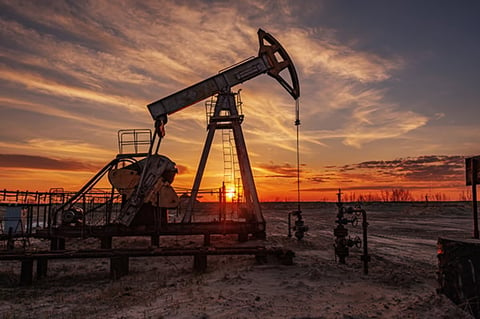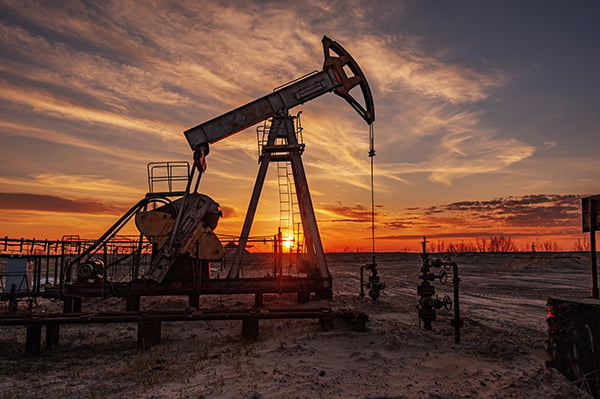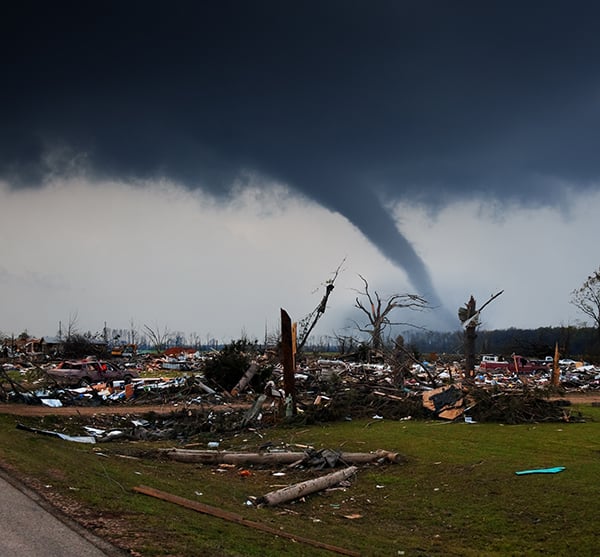
In the last two years, we have seen crude oil prices fluctuate from trading at historic lows of $13.78 price per barrel in April 2020 to a new eight-year high of $111.53 in March 2022. Quite the increase wouldn’t you say? A +709% increase to be exact. Oil prices have been notoriously volatile throughout our country’s rich history. Why? Because of the long list of everchanging factors that contribute to the fluctuations of this raw material’s price.
 Photo courtesy of iStock/bashta
Photo courtesy of iStock/bashta
What is crude oil, and where is it used?
Crude oil is defined as an unrefined petroleum fossil fuel. For it to be used by consumers it must go through a complex refining and finishing process. According to the U.S. Energy Information Administration (EIA) refined petroleum products are primarily used across three sectors that include transportation, industrial, and residential. In 2020, the U.S.’s most consumed petroleum products included motor gasoline, distillate fuel oil (diesel fuel and heating oil), natural gas liquids, and jet fuel. These four sources accounted for 84% of U.S. petroleum product consumption.
So, what makes crude oil prices volatile?
There are quite a few factors to consider when explaining the volatility of crude oil prices.
- Supply and demand
- Seasonal demands
- Natural disasters
- Where you live
 Photo courtesy of iStock/takasuu
Photo courtesy of iStock/takasuu
Supply and demand
A basic rule of economics is supply and demand. The law of supply and demand also plays a major role in the fluctuation of oil prices. The demand refers to the amount of oil that the consumers want, and what they will pay for it. The supply refers to how much oil is available for distribution to the consumers. So, what contributes to the ups and downs of the supply and demand cycle?
High supply + low demand = lower prices
When there is a high supply of oil, the price decreases. When the price goes down, the demand begins to increase because consumers then want more product at a lower price.
For instance, when there is an excess of oil available, companies will lower their prices to help sell their inventory. Once consumers see the prices decreasing, they begin demanding more.
This then begins the uptick of demand.
Low supply + high demand = higher prices
When demand for oil exceeds supply, supply begins to decline. When there is not enough supply to meet the consumer demands, the prices begin to increase again. Once the prices increase, the demand begins to pull back. Consumers will not want to pay the higher prices for the oil.
For example, American travel is at its highest during the summer months. This increase in demand will lower the supply of oil and increase the prices as more Americas demand gasoline for their travels.
The increased prices will then start to reduce the demand, supply will then again increase, and prices will decrease. Starting the cycle over again.
Equilibrium/Balance
Essentially, equilibrium or balance of supply and demand is the goal. When equilibrium is reached, this means the supply is equal to the consumer demand thus creating stable oil prices.
 Photo courtesy of iStock/The-Vagabond
Photo courtesy of iStock/The-Vagabond
Seasonal demands
Seasonal changes have a significant impact on crude oil prices. For example, in summer, when people travel, prices tend to climb. In addition, the hurricane season peaks in August and September, potentially driving up oil costs. It is also worth mentioning that in March and April, refineries transition to producing summer-blend gasoline. Summer blends are more expensive to produce and are on average $0.03 to $0.15 cents more per gallon.
According to the Clean Air Act, various fuels must be utilized for different seasons. Cars and trucks in the winter utilize a blend of gasoline that helps them to start in cold temperatures more easily. However, if winter-blend gasoline is used in the summer, it emits more emissions. Why? Because there is more smog and ozone in the summer than in the winter, leading to increased pollutants that can harm our lungs. When it is hot out, winter blend gas doesn't burn cleanly, emitting air pollutants that threaten both the environment and the people who inhabit it.
 Photo courtesy of iStock/clintspencer
Photo courtesy of iStock/clintspencer
Natural disasters
Natural disasters can cause crude oil prices to fluctuate. For example, in August 2017, some U.S. oil refineries shut down to prepare for Hurricane Harvey, leading fuel prices to spike by over 10%. When pipelines are destroyed or damaged, oil delivery is delayed, repairs are required, and prices temporarily increase due to the lack of supply.
Hurricane Katrina, which hit the Gulf of Mexico in 2005, destroyed U.S. pipelines and oil platforms along the coast, leading oil prices to briefly exceed $70 per barrel.
 Photo courtesy of iStock/zabo69005
Photo courtesy of iStock/zabo69005
Where you live
Oddly enough, where you live plays a role in oil and gas prices. According to the U.S. Energy Information Administration (EIA), in 2019 the Northeast accounted for around 86% of all residential fuel oil sales in the U.S., and this number is projected to remain largely consistent because most new houses utilize natural gas or electricity for heating. The Midwest is the second-largest area, but it only accounts for 6% of total sales, followed by the South at 6%, and the West at 2%.
Because heating oil is considered a commodity its pricing is influenced by supply and demand. Some of the most important factors to consider are the number of distributors and suppliers you have access to, as well as how accessible it is for them to reach you. The easier it is for you to source heating oil from several suppliers, the more they will need to compete on price to gain your business.
If you live in an area that is only supplied by one source or if your property is particularly difficult to access, you may expect to spend more on your heating oil than the national average.
In Review
While these factors have a heavy hand in the reasons why crude oil prices rise and fall, ultimately there are many reasons why crude oil prices remain volatile year in and year out. Interested in more? Check out our blog "Crude Oil, Refined" to learn more about this hot commodity. If you enjoyed this blog post, please share it with your colleagues.


